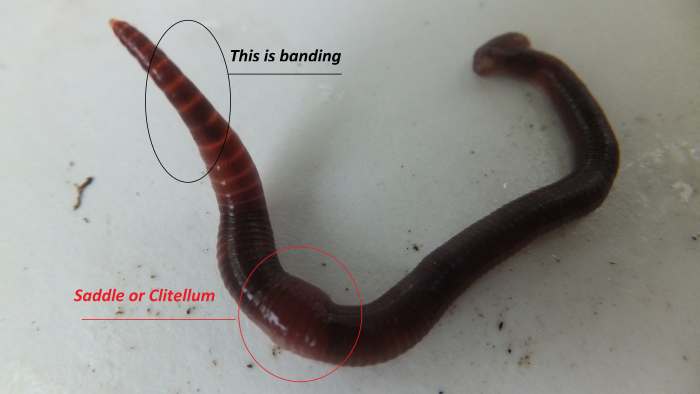What Not to Feed Red Wiggler Worms
Vermicomposting is fun, challenging, and faster than hot composting. I compost with blues, red wigglers, and European Nightcrawlers.

Learn how to identify the red wiggler compost worm.
Rob Hille
About the Red Wiggler
Red wiggler worms have been a mainstay of vermicomposting for many years. They are a fairly simple and easy-to-use composting worm. Eisenia fetida and Eisenia andrei are both frequently sold as "red wigglers," and are nearly impossible to tell apart by visual inspection.
Red wigglers aren't very picky about their environment, as long as it is somewhat moist and contains food and lots of bedding. Red wigglers process paper, cardboard, and most food scraps relatively quickly. They can be used to create castings, which can be used for your garden or sold to other gardeners.
We use red wigglers to decrease our overall carbon footprint. I've grown hops, blackberries, tomatoes, and peppers in my backyard with the help of my little friends in the ground.
How to Identify Red Wigglers
The first step in identifying a red wiggler worm is to look at the color. Red wigglers are usually a reddish color, unlike the blue worm or Alabama jumper. Depending on their diet, sometimes their tail end is a lighter red or yellowish color.
Red wiggler worms are about 3–4 inches in length when fully grown and stretching out to move. When they stretch, there is banding between their segments, leading to the nickname "tiger worm."
Near the head of the worm, there is something referred to as the "clitellum," though it is also commonly referred to as the "saddle." In the red wiggler, the saddle is slightly larger than the main body of the worm and looks similar to a bead on a string. Though all composting worms have a saddle, some may be flush with the main body in different species.

Here is a great shot of red wiggler worm that shows all the different identifying characteristics.
My own worms
Preparing Your First Vermicomposting Bin
To get started, you need some sort of container or bin for your worms to live. Shred some regular newspaper or corrugated, brown cardboard.
Only use plain newspaper—it should not be shiny at all. Try to remove plastics, such as tape, from your cardboard. This is called bedding. Coco coir is popular and can also be used, especially if you're concerned about remaining organic.
Scroll to Continue
Read More From Dengarden
Keep Your Compost Bin Moist, But Not Too Wet
Add your chosen bedding and wet it down with enough water to moisten. If you add too much water, there will be a standing pool at the bottom, which is undesirable. As a general rule, you should be able to pick up some of your moistened bedding and squeeze out a drop or two of liquid. If the bedding is too wet, you can drain some out, or add more bedding to absorb the excess moisture.
I have tried a fair number of different styles of vermicomposting systems, both commercial-made and DIY. The easiest and simplest thing to look for is a large, opaque bin with a lid. I use a Sterilite industrial 27-gallon bin.
Place a lightweight cloth over the bin and loosely cover it with the lid—do not snap it on. This will allow airflow into the bin, as the worms need oxygen, which they absorb through their skin. This is why moisture management is so important. Too much moisture and the worms aren't exposed to enough oxygen to survive. Too little moisture and the oxygen won't effectively diffuse into your worms.
I also took a small nail and created a hole on the side of the bin to allow drainage. Since I live in USDA zone 9b, it is very humid but also hot here. Depending on where you live, more holes may be necessary, or even none at all. Also, make sure that your bin is placed in the shade.
Feeding Your Red Wigglers
Overall, red wigglers are not very picky. They can safely process aged manure, most fruits and vegetables, newspaper, and plain brown cardboard boxes. Other consumer cardboards can be composted, but take care to remove plastics and other non-biodegradables.
Meats and dairy should be avoided, however. Pineapple and citrus are also very acidic and have special meat-tenderizing enzymes that are bad for their squishy bodies. While they are possible to compost, generally they should be avoided.
Try to bury foods underneath some bedding to avoid undesirable insects, such as roaches, fruit flies, and ants. As it reaches time to harvest your castings, try to bury foods on one side of the bin. Your worm army will naturally migrate towards the food, making harvesting the other side much easier.
Once your harvest is complete, replace it with moist bedding and begin feeding on the other side. Repeat until you have enough castings for your garden.
Red Wigglers Are Your Easy-to-Care-for Friends
Red wigglers are an easy-to-care-for worm species that aren't too particular about diet. Management of moisture and occasional feeding is important to remember. Keep them in the shade, and they will provide you castings to use or sell, all while decreasing the amount of waste that ends up in the landfill.
This content is accurate and true to the best of the author's knowledge and is not meant to substitute for formal and individualized advice from a qualified professional.
Source: https://dengarden.com/gardening/Identifying-the-Red-Wiggler-Composting-Worm
0 Response to "What Not to Feed Red Wiggler Worms"
Post a Comment